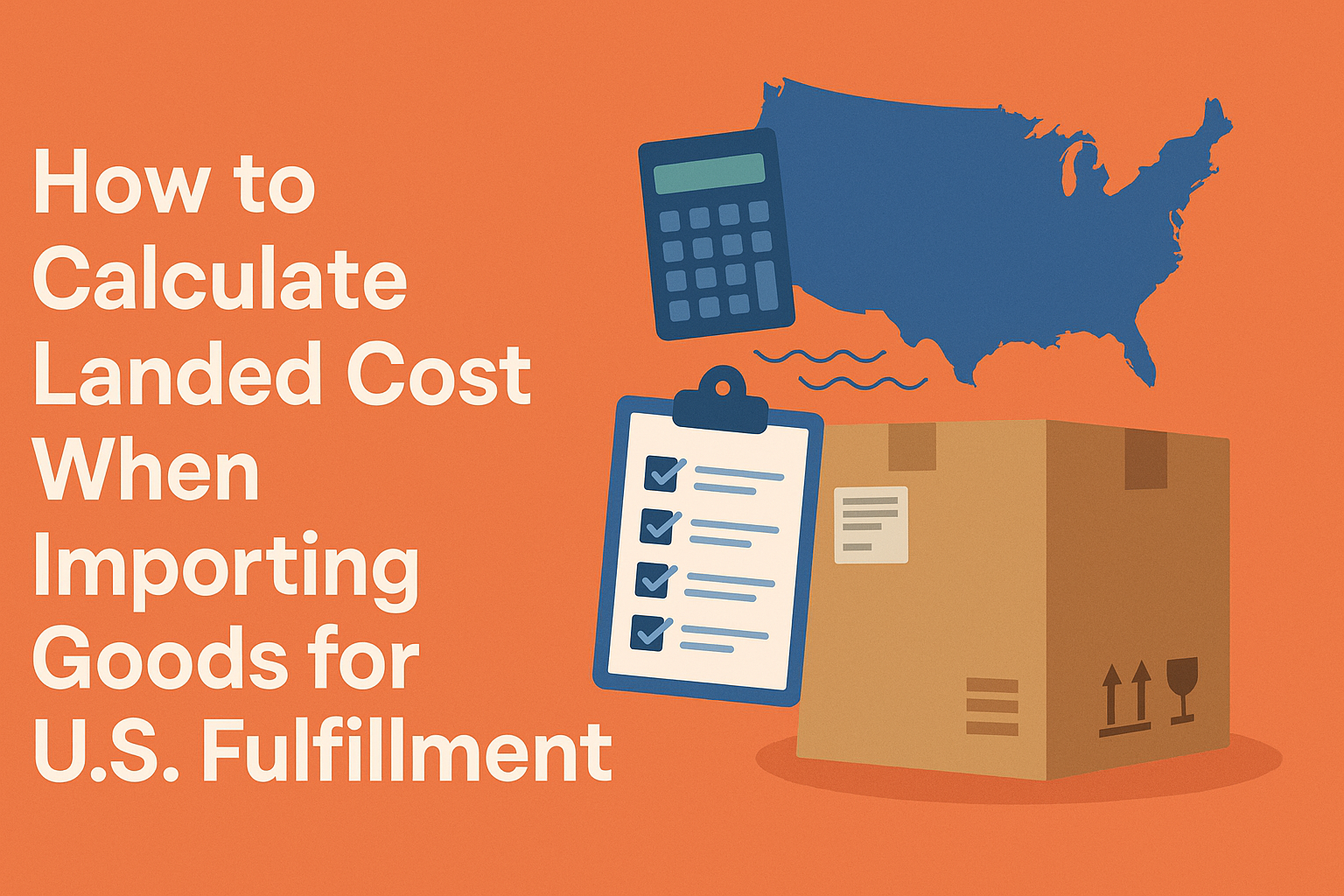In the dynamic world of global trade, importing goods for sale in the U.S. market presents both immense opportunities and significant complexities. For e-commerce businesses, understanding the true cost of bringing a product from its origin to the customer’s doorstep is paramount. This isn’t merely about the sticker price of the goods; it encompasses a myriad of expenses that collectively form what’s known as the **landed cost**. Ignoring these hidden charges can quickly erode profit margins, leading to unexpected financial setbacks and hindering your growth.
This comprehensive guide delves deep into the intricacies of landed cost calculation, providing you with the knowledge and tools to accurately assess your import expenses. We’ll explore the various components that contribute to the landed cost, offer practical examples, and highlight how strategic partnerships with **U.S. fulfillment centers** can optimize this critical metric for your business.
—
Decoding Landed Cost: Beyond the Purchase Price
At its core, landed cost is the total cost of a product once it has arrived at the buyer’s destination. It includes the initial product cost, all shipping and transportation fees, customs duties, taxes, insurance, currency conversion, and any other charges incurred along the supply chain. Think of it as the sum total that needs to be paid before an item is ready for sale or distribution to the end consumer.
Why is Landed Cost So Crucial for E-commerce Importers?
- Accurate Pricing Strategy: Without a clear understanding of landed cost, setting competitive yet profitable prices becomes a guessing game. Overpricing can deter customers, while underpricing can lead to losses.
- Profit Margin Protection: Unexpected costs can quickly eat into your profit margins. Knowing your landed cost allows you to forecast profitability with greater accuracy.
- Supply Chain Optimization: A detailed breakdown of landed cost helps identify areas where you can reduce expenses, such as negotiating better shipping rates or optimizing customs processes.
- Informed Decision-Making: When evaluating new products or suppliers, comparing landed costs from different sources empowers you to make smarter procurement decisions.
- Compliance and Risk Mitigation: Understanding duties and taxes helps ensure compliance with import regulations, avoiding potential fines or delays.
—
The Core Components of Landed Cost: A Detailed Breakdown
Calculating landed cost involves accounting for several distinct categories of expenses. Let’s break down each one:
1. Product Cost (The Starting Point)
This is the most straightforward component: the price you pay to your supplier for the goods themselves. It’s typically the FOB (Free On Board) or EXW (Ex Works) price, depending on your Incoterms agreement. For example, if you’re importing 1,000 units of a product at $5 per unit, your product cost is $5,000.
2. Shipping and Freight Costs (From Factory to Fulfillment Center)
These are the expenses associated with transporting your goods from the manufacturer’s location to your U.S. fulfillment center. This can be complex and depends on several factors:
- Ocean Freight vs. Air Freight: Air freight is faster but significantly more expensive, ideal for high-value, time-sensitive, or smaller shipments. Ocean freight is more economical for bulk shipments but takes longer.
- Port Charges: Fees at both the origin and destination ports, including terminal handling charges, documentation fees, and drayage (transport from port to warehouse).
- Fuel Surcharges: Volatile costs that fluctuate based on global oil prices.
- Accessorial Charges: Additional fees for services like liftgate delivery, limited access delivery, or residential delivery.
3. Customs Duties and Tariffs (Navigating U.S. Import Regulations)
These are taxes levied by the U.S. government on imported goods. The duty rate depends on the type of product (Harmonized System or HS code), its country of origin, and trade agreements. It’s crucial to correctly classify your goods to avoid overpaying or facing penalties. For example, some products from certain countries might have higher tariffs due to specific trade policies.
4. Import Taxes and Fees (Beyond Duties)
While duties are a primary concern, other taxes and fees can apply:
- Merchandise Processing Fee (MPF): A fee charged by U.S. Customs and Border Protection (CBP) for most imported commercial goods.
- Harbor Maintenance Fee (HMF): Applies to imports entering U.S. ports, used to maintain and improve harbors.
- Excise Taxes: Specific taxes on certain goods like alcohol, tobacco, or luxury items.
- State Sales Tax (if applicable): Depending on your business model and nexus, you might need to account for state sales tax on imported goods.
5. Insurance (Protecting Your Investment)
Cargo insurance protects your goods against loss or damage during transit. While not legally required, it’s a wise investment, especially for high-value shipments. The cost typically depends on the value of the goods and the type of coverage.
6. Currency Conversion Fees (The Exchange Rate Factor)
If you’re paying your supplier in a foreign currency, you’ll incur costs associated with currency exchange. This includes the exchange rate itself and any fees charged by your bank or payment provider for the conversion.
7. Miscellaneous Costs (Often Overlooked)
These can include a range of smaller but significant expenses:
- Customs Broker Fees: If you use a customs broker to manage the import process, their fees will be part of your landed cost.
- Inspection Fees: For certain goods, specific government agencies (e.g., FDA, USDA) may require inspections.
- Warehousing Fees (Initial Storage): While your primary fulfillment center handles ongoing storage, there might be initial short-term warehousing costs at ports or staging areas.
- Packaging and Labeling (Pre-Fulfillment): Any specialized packaging or labeling required before the goods reach your fulfillment partner.
—
Calculating Landed Cost: A Step-by-Step Approach with Examples
Let’s illustrate the calculation with a hypothetical scenario:
Scenario: You’re importing 5,000 units of custom-designed phone cases from China to a **Texas fulfillment center** for your e-commerce brand.
Example Landed Cost Calculation:
| Cost Component | Description | Estimated Cost |
|---|---|---|
| 1. Product Cost | 5,000 units @ $2.00/unit | $10,000.00 |
| 2. Shipping & Freight (Ocean) | Container shipment from Shanghai to Houston port, including drayage to fulfillment center | $1,800.00 |
| 3. Customs Duties & Tariffs | 5% duty on product cost ($10,000 * 0.05) | $500.00 |
| 4. Import Taxes & Fees | Merchandise Processing Fee (MPF) (e.g., 0.3464% of product value, min $27.75, max $538.40) | $34.64 |
| Harbor Maintenance Fee (HMF) (0.125% of product value) | $12.50 | |
| 5. Insurance | 0.5% of total product + freight value (($10,000 + $1,800) * 0.005) | $59.00 |
| 6. Currency Conversion | Approx. 1% of product cost for international transfer fees | $100.00 |
| 7. Customs Broker Fees | Standard brokerage fee per shipment | $250.00 |
| Total Landed Cost | $12,756.14 | |
| Landed Cost Per Unit ($12,756.14 / 5,000 units) | $2.55 | |
In this example, the actual cost per unit is $2.

